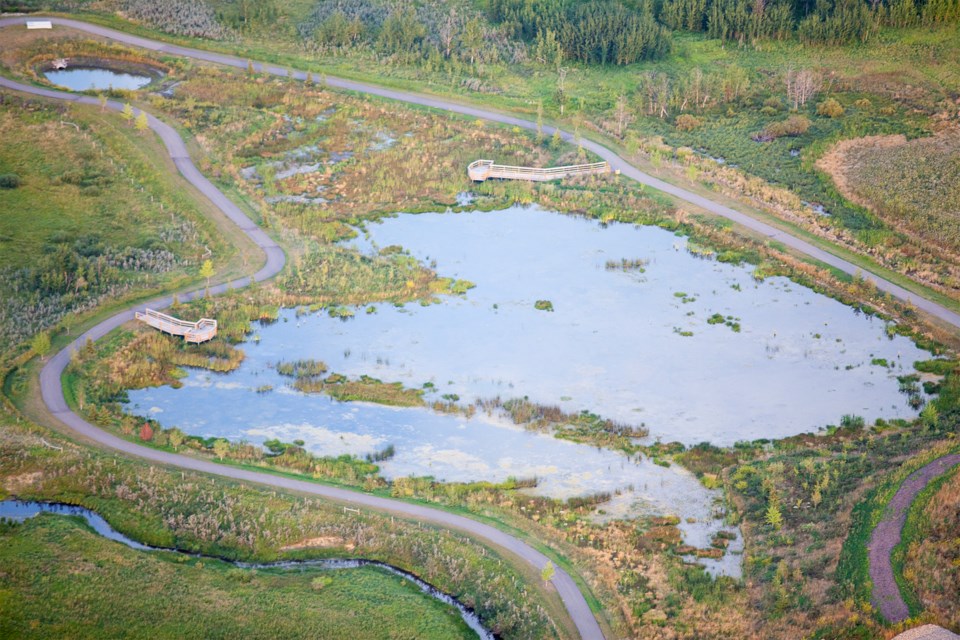DIDSBURY - Town council has approved the town’s new pedestrian connectivity master plan (PCMP), which provides a comprehensive outline of pedestrian infrastructure priorities for the next 10 years.
The approval came by way of motion at the recent regularly scheduled council meeting, held in person and online.
The objective of the plan is to address the community’s connectivity, safety, and accessibility requirements, as well to evaluate the condition of existing infrastructure, council heard.
“An interconnected pathways and trails system has been a priority in our community for a long time – inter-connectivity of those pathways and trails has also been part of that priority to create new as well as tie together the existing network in a way that makes sense for our residents and visitors,” mayor Rhonda Hunter told the Albertan.
“In responding to this priority, agreeing on a vision and understanding the cost for this system were critical pieces in moving forward with such a vision and network, and the connectivity plan was created out of a consultative process that saw the success in creation of the plan.”
The plan has been in development for the past year with an engagement process involving input from residents and other community stakeholders.
“It is great news for our community that the pedestrian connectivity plan has been created through this consultative process with residents and is now approved by council that has a 10-year planning vision for our reference and implementation,” she said.
Preparing the plan included a survey, input workshops, digital interactive mapping tools, interviews, a pop-up engagement station, and an in-person assessment of existing pedestrian infrastructure.
Other research consisted of a review of key internal, regional, provincial and national documents and trends.
The community engagement identified a desire for safety improvements such as lighting, additional crosswalks, signage and addressing snow/ice safety concerns, improved curb ramps in older streets, added sidewalks along some streets, and enhanced amenities such as seating, picnic tables and bike racks.
The approved plan includes a number of top priorities including the following:
• Develop a pedestrian infrastructure and maintenance policy and invest approximately $200,000 a year in lifecycle renewal to maintain pedestrian infrastructure and fix deficiencies.
• Update pathway and sidewalk standards to incorporate universal design best practices.
• Review the town’s snow clearing policy and update a snow clearing education campaign.
• Enhance the pedestrian network at the Memorial Complex and adjacent park area.
• Add signal flashers to the pedestrian crosswalk between 20th Avenue and 14th Street.
• Complete a fully-linked corridor with asphalt multi-use pathways and pedestrian crossings between 15th Avenue and the rail corridor.
• Add a multi-use pathway along 15th Avenue and upgrade the pedestrian crossings at the 20th and 23rd Street intersections.
• Add sidewalks to 12th Avenue between 23rd Street and the rail corridor.
• Add a sidewalk to fill the gap along Deer Coulee Road.
• Enhance pedestrian accessibility and amenities at Memorial Park.
• Add a multi-use pathway to connect Valarosa to Memorial Park.
The capital budget for implementing the recommended priority capital projects is estimated to be $2,643,000 over the next 10 years, said mayor Hunter.
“The pedestrian asset renewal plan recommends an investment of $198,962 annually to maintain and renew pedestrian assets in the community,” she said. “While that is bold and big, we do have the list of priorities for the top 15 actions that council can now look at annually and for planning and budget discussions.
“It is the intent to now participate in informed discussion during every budget cycle, being reminded that this is what residents have asked for, to facilitate the development and maintenance of trails, walkways, and paths that are accessible, safe, promote active recreation choices, as well as support access to businesses and encourage growth.”



